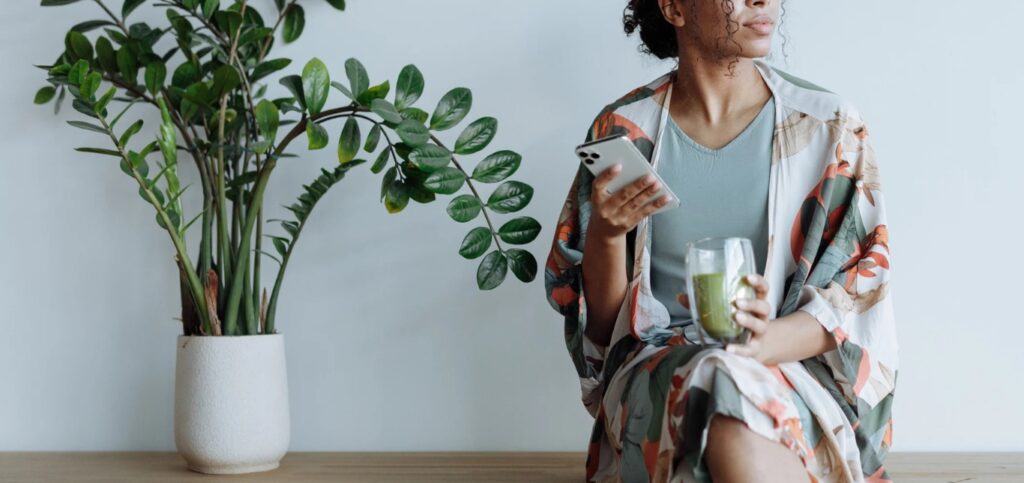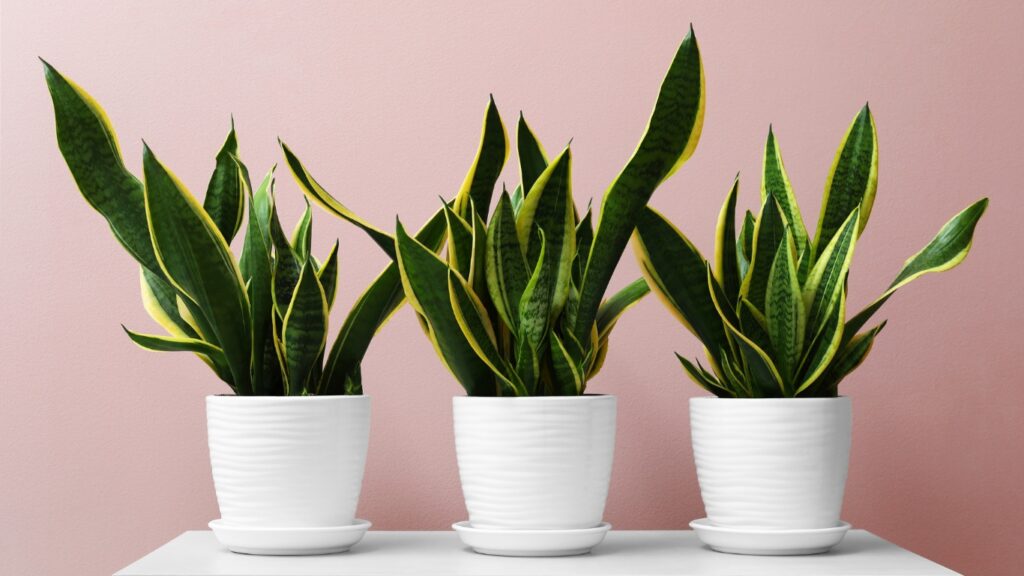The rising trend of indoor plants in homes has led to an increased interest in exploring the benefits they bring to our living spaces.
As people seek to create healthier, more aesthetically pleasing, and productive environments, understanding the advantages of incorporating indoor plant becomes crucial.

Impact on Health
- Boosting air quality and reducing pollutants: They play a vital role in purifying the air we breathe. Through photosynthesis, they absorb carbon dioxide and release oxygen, effectively improving air quality by reducing pollutants such as formaldehyde, benzene, and trichloroethylene.
- Enhancing respiratory health and reducing allergies: The presence of indoor plant can alleviate respiratory ailments by increasing humidity levels and reducing dust and airborne allergens. This is especially beneficial for individuals suffering from allergies or asthma.
- Improving mental health and reducing stress levels: Research suggests that indoor plants can have a positive impact on mental well-being. Their presence can reduce stress, anxiety, and depression, creating a calming and serene environment.
- Promoting better sleep and relaxation: Indoor plants release oxygen during the day and absorb carbon dioxide at night. This natural process can help create a more oxygen-rich environment, promoting better sleep, and enhancing relaxation.
- The link between green plants and overall well-being: The color green is often associated with feelings of calmness and relaxation. The presence of green plants indoors can evoke these emotions, contributing to an improved sense of well-being and tranquility.
Aesthetics and Interior Design
- Adding natural beauty and visual appeal: Indoor plants bring the beauty of nature indoors, adding a touch of natural elegance to any space. Their varied shapes, sizes, and colors can complement any interior design style, creating a visually appealing environment.
- Creating a calming and serene environment: The presence of indoor plants can create a sense of tranquility and serenity. Their calming effect can help reduce anxiety and stress, transforming a living space into a peaceful sanctuary.
- Enhancing interior spaces and decor: Indoor plants can be used strategically to enhance interior spaces. Placing them on shelves, hanging them from the ceiling, or incorporating them into tablescapes can add depth, texture, and a sense of charm to the overall decor.
- Utilizing plants as a design element: They can serve as design elements, defining and anchoring specific areas within a room. They can be used to create natural divisions, serve as beautiful room dividers, or act as focal points, drawing attention and adding visual interest.
- The role of plants in bringing life to dull spaces: Dull and lifeless spaces can be transformed by the introduction of indoor plants. Their vibrant colors, lush foliage, and unique shapes can breathe new life into any room, creating an inviting and captivating atmosphere.
- Adding ambiance with varying plant sizes and shapes: The size and shape of indoor plants can significantly impact the ambiance of a space. Larger plants can create a sense of grandeur and drama, while smaller plants can add delicate touches of greenery.
Productivity and Concentration
- Increasing focus and attention span: Studies have shown that the presence of indoor plants in work and study environments can enhance focus, concentration, and cognitive functioning. Their soothing presence can help reduce mental fatigue and improve overall productivity.
- Enhancing creativity and problem-solving skills: The visual stimulation provided by indoor plants has been found to enhance creativity and problem-solving abilities. Their presence can inspire fresh ideas, improve cognitive flexibility, and encourage innovative thinking.
- Improving productivity and work performance: Incorporating plants into office spaces has been linked to increased productivity and improved work performance. Their presence can help reduce distractions, foster a sense of well-being, and increase overall employee satisfaction.

- Implementing plants in office environments for optimal performance: Incorporating them in office spaces can optimize performance and well-being.
- The impact on employee satisfaction and motivation: Indoor plants can positively impact employee satisfaction and motivation levels. Their presence creates a visually appealing and soothing workspace, leading to increased job contentment and a higher level of motivation.
Plant Types and Care
- Low-maintenance indoor plants for beginners: For those new to plant care, there are several low-maintenance types that can thrive with minimal attention. Examples of common ones include snake plants (Sansevieria), pothos (Epipremnum aureum), and ZZ plants (Zamioculcas zamiifolia).

- Choosing the right plants for specific rooms: Different rooms have varying conditions such as lighting and humidity levels. It is important to select right type that can thrive in these specific environments. For instance, the ones that thrive in low light conditions like peace lilies (Spathiphyllum) are suitable for bedrooms.
- Understanding sunlight and watering requirements: Indoor plants have diverse sunlight and watering requirements. Some thrive in bright, direct sunlight, while others prefer partial shade. Understanding these requirements and ensuring appropriate watering practices is crucial for their health and longevity.
- Tips for maintaining healthy indoor plants: Regular care and maintenance are essential for their well-being. This includes providing proper drainage, avoiding overwatering, and periodically cleaning leaves to remove dust and promote healthy growth.
Case Studies: Real-life Examples
- Successful integration of indoor plants in residential homes: Many homeowners have successfully integrated them into their living spaces. By strategically placing them in key areas, such as living rooms or bedrooms, they have elevated the aesthetic appeal and experienced the associated health benefits.
- Creative use of plants in commercial spaces: Commercial spaces, such as restaurants and retail stores, have embraced the use of indoor plants to create a unique and inviting atmosphere. Through the strategic placement, these spaces have successfully captivated and engaged visitors.
- Testimonials from individuals experiencing plant benefits: Numerous individuals have shared their personal experiences with indoor plant for home and the positive impact they have had on their lives. Testimonials highlight improved well-being, reduced stress levels, and enhanced productivity as some of the benefits they have witnessed.
Tips for Indoor Plant Care
- Lighting considerations and placement: Understanding the lighting requirements of indoor plants is essential for their health. Some are low light indoor plants while others thrive in bright, indirect light. Placing them near windows or utilizing artificial lighting can ensure they receive adequate light.
- Proper watering techniques and schedules: Overwatering or underwatering can lead to the demise of indoor plants. Understanding the watering needs of various plant species and providing the appropriate amount of moisture at regular intervals is crucial for their survival.
- Choosing the right pots and soil for different plants: Selecting the correct indoor plant pot and soil is vital for their overall well-being. Choosing pots with drainage holes and using well-draining soil can prevent waterlogged roots and promote healthy growth.
- Recognizing and treating common plant issues: Indoor plants are susceptible to various issues such as pests, diseases, and nutrient deficiencies. Recognizing the symptoms of these problems and applying appropriate treatments, such as natural pest control or adjusting nutrient levels, is important for their longevity.
Addressing Common Concerns
- Are indoor plants suitable for everyone? While indoor plants offer numerous benefits, it is important to consider individual preferences, allergies and sensitivities.
- What about pets and plant toxicity concerns? It is crucial to choose pet-friendly plants that are safe for households with animals. Some meant for home can be toxic to pets if ingested, so selecting non-toxic varieties or placing them out of reach is essential.
- How to overcome challenges of plant care and maintenance: Plant care and maintenance can be challenging for some individuals. However, by understanding the specific needs, establishing a routine and seeking guidance from plant care resources, these challenges can be overcome.
- Dealing with potential pests and plant diseases: Indoor plants may be susceptible to pests such as spider mites, mealybugs, or fungal diseases. Regular inspection, early detection, and appropriate treatment methods, such as natural remedies or organic pesticides, can help control and prevent infestations.
Conclusion: The Power of Indoor Plants
In conclusion, the benefits of indoor plants in home encompass health improvements, aesthetic enhancements and increased productivity.
By boosting air quality, reducing stress levels, and adding a touch of natural elegance, they have become essential elements in modern homes.
Embracing the greener side of modern living spaces allows us to appreciate the versatility and resilience that they bring to our lives.




